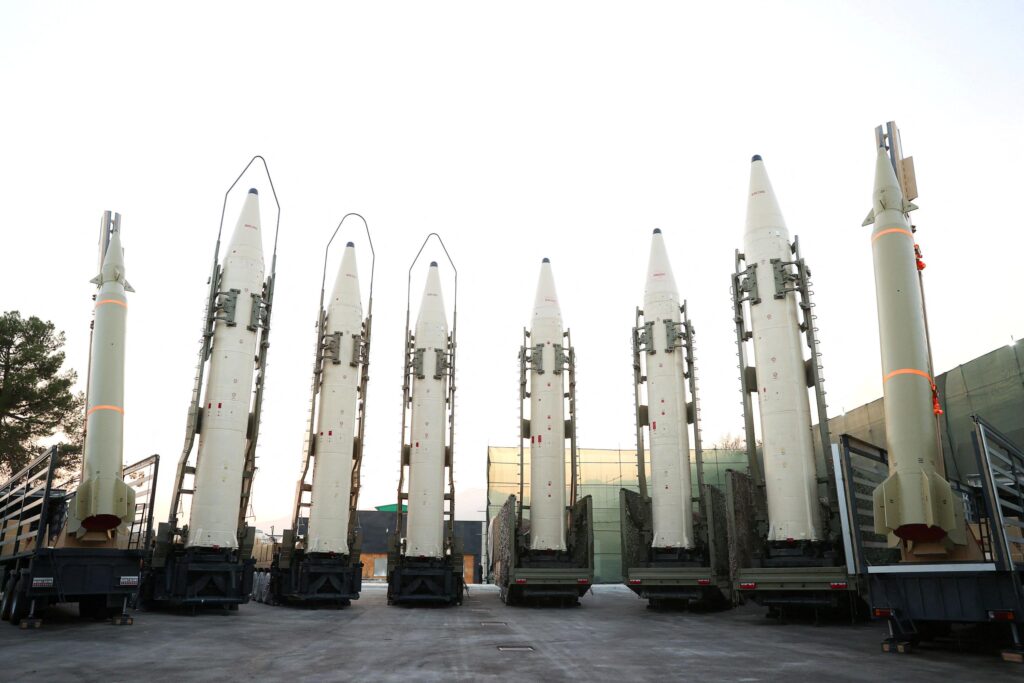In the calm waters of the Persian Gulf, a growing threat looms over the mighty US aircraft carriers – Iranian anti-ship missiles. As tensions escalate in the region, the advanced capabilities of these missiles present a formidable challenge to the US Navy’s strategic dominance. Let us dive deep into the intricate world of naval warfare and explore the evolving dynamics of power and security in the volatile waters of the Middle East.
Iranian Navy Bolsters Arsenal with Advanced Anti-Ship Missiles
The Iranian Navy has recently bolstered its arsenal with advanced anti-ship missiles, posing a significant threat to US aircraft carriers in the region. These missiles are capable of targeting and destroying large naval vessels from long distances, giving Iran a strategic advantage in the Persian Gulf.
The addition of these powerful anti-ship missiles has raised concerns among US military officials, who fear that their aircraft carriers could be vulnerable to attack. With tensions already high between the two countries, this new development has the potential to escalate the situation and increase the risk of conflict in the region. The Iranian Navy’s enhanced capabilities have shifted the balance of power in the Persian Gulf, prompting the US to reassess its naval strategy in response to this new threat.
Potential Threat to US Aircraft Carriers in Persian Gulf
US aircraft carriers in the Persian Gulf are facing a significant threat from Iranian anti-ship missiles, posing a potential danger to the safety and operations of these crucial naval assets. The advanced missile systems possessed by Iran have the capability to target and strike US aircraft carriers with high precision, making them a formidable threat in the region.
With tensions escalating between the US and Iran, the possibility of a direct confrontation involving anti-ship missiles cannot be ignored. The strategic positioning of Iranian missile batteries along the Persian Gulf coast increases the vulnerability of US aircraft carriers operating in the region. This threat underscores the importance of maintaining vigilance and readiness to counter any potential attacks that may be launched against these vital naval assets.
Analyzing the Capabilities and Reach of Iranian Missiles
Iran’s arsenal of anti-ship missiles poses a significant threat to US aircraft carriers in the region. The capabilities and reach of Iranian missiles such as the Noor, Khalij Fars, and Qader missiles have been a cause for concern for US military strategists. These advanced missiles are designed to target naval vessels, making them a formidable force in the Persian Gulf and beyond.
The precision and range of these Iranian missiles allow them to effectively target US aircraft carriers in the region, putting American military assets at risk. With ongoing tensions between the US and Iran, the threat of Iranian anti-ship missiles looms large, highlighting the need for continued vigilance and preparedness in the region. In the event of a military confrontation, these missiles could pose a serious challenge to US naval dominance in the Persian Gulf.
Suggestions for Strengthening US Naval Defense in the Region
Strategic Changes:
One suggestion for strengthening US naval defense in the region is to increase collaboration with regional allies such as Israel and Saudi Arabia. By forming strategic partnerships and sharing intelligence, the US Navy can better prepare for potential threats from Iranian anti-ship missiles. Additionally, investing in advanced missile defense systems such as Aegis and THAAD could provide an added layer of protection for US aircraft carriers.
Enhanced Training and Drills:
Another recommendation is to conduct regular training exercises focused on countering anti-ship missile attacks. By simulating scenarios where US aircraft carriers are targeted, naval personnel can hone their skills and develop effective strategies for defense. These drills should involve coordination with other branches of the military, as well as participation from allied navies to enhance interoperability and readiness.
The Conclusion
As Iranian anti-ship missiles continue to pose a threat to US aircraft carriers in the region, the stakes are high for both nations. The strategic balance of power in the Persian Gulf remains precarious, with tensions simmering just beneath the surface. It remains to be seen how this conflict will unfold and what the future holds for the region. Stay informed and stay tuned for updates on this evolving situation. Thank you for reading.


